
Editor’s Note:
,,In this piece, I am not arguing for or against either approach but rather sharing some of my observations about a selection of decidedly not vegan cosmetic ingredients that I’m seeing from brands and suppliers around the world.”
Vegan beauty encompasses both botanical and synthetic ingredients. The term has ethical connotations as well as an air of environmental sustainability. Still, in spite of the traction that vegan claims have in both the consumer and ingredient marketplaces, non-vegan inputs and products continue to be in demand.
Insects
One of the most interesting not vegan product lines that I learned about this year comes from a Korea-based brand called MIRACLETOX®.
The brand’s Light Angelto Cream launched early in 2023 and is formulated to address the discomfort of a topic dermatitis on both the face and body.
And certainly as a sub-category, skincare formulated for chronically dry skin or concerns such as eczema and psoriasis is increasingly commonplace.
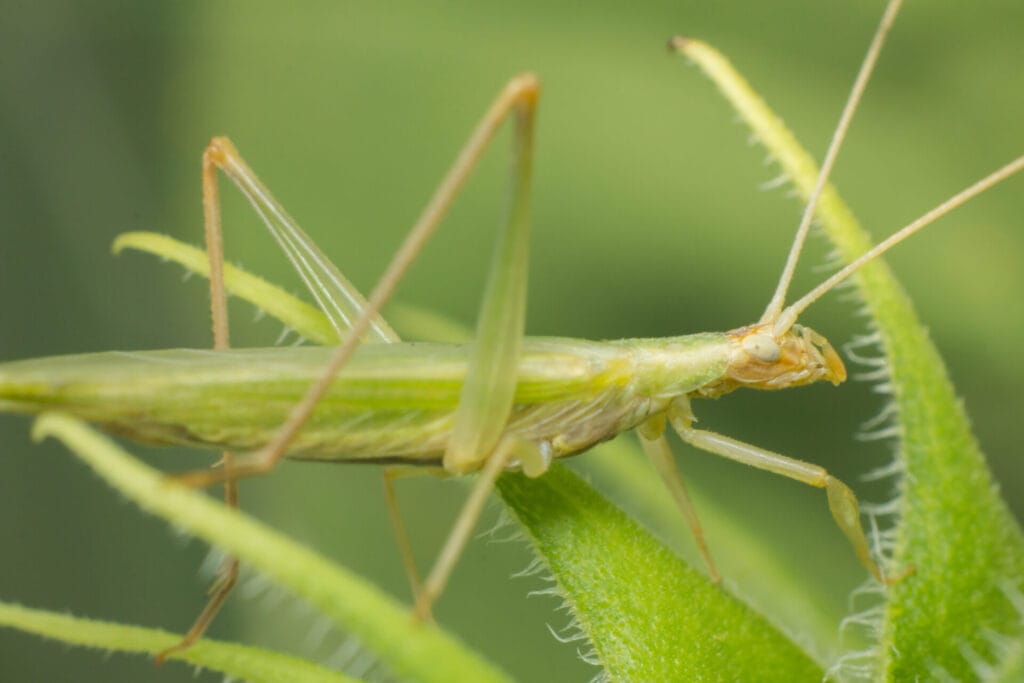
The hero ingredients in Light Angelto Cream are mealworm oil and grasshopper oil. This “oil blend is rich in unsaturated fatty acids and essential amino acids” and is “derived from Korean edible insects bred in the country’s Jirisan mountain region and fed with maclura ferment enzyme,” which is purportedly why the product is able to deliver on its benefit claims. That’s according to material By Femme S.R.O (a Czech Republic – based distributor of the brand) shared with Cosmoprof Worldwide Bologna as part of a submission to this year’s Cosmoprof Awards. And the Light Angelto Cream from MIRACLETOX® did win a 2024 Cosmoprof Award in the Personal Care & Body Care Products category. So it would seem that insect oils have captured not only my attention but that of consumers and the industry at large as well.
Another insect ingredient source that has come up in my work over the years are black soldier flies, a fly that is fairly common within the continental US and known scientifically as Hermetia illucens. Like the mealworms and grasshoppers mentioned above,
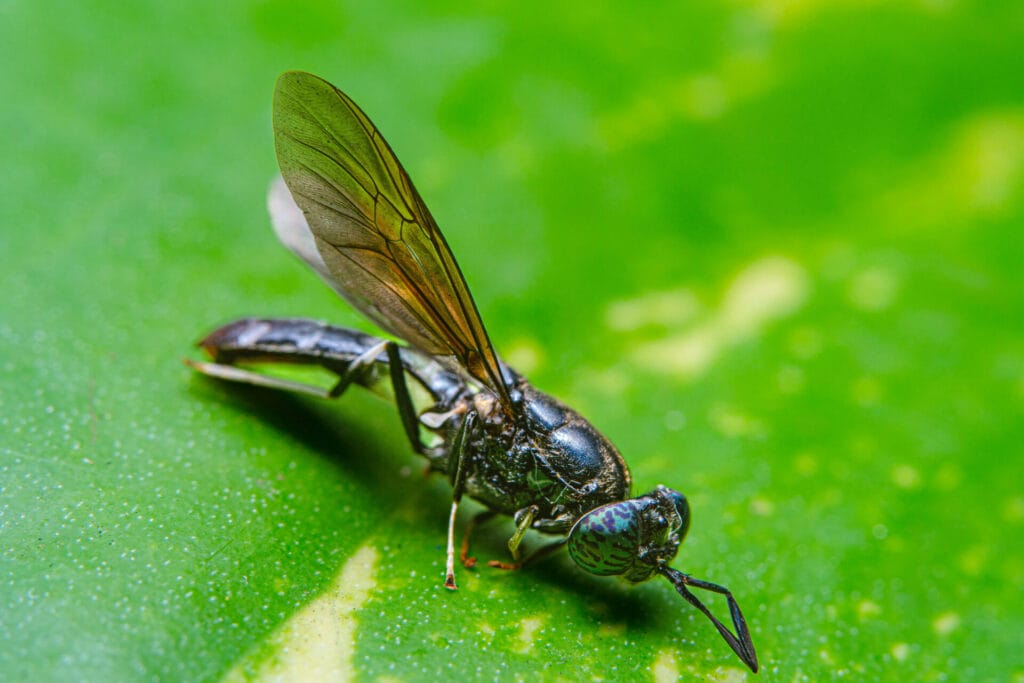
black soldier flies are bred and fed for commercial purposes.From what I can gather, black soldier fly larvae, extracts, and excrement (called frass) are commonly sold for use in the food and beverage industry, in biomedicine, in the antifungal treatment and water treatment sectors, in livestock feed, pet food, feed used in the aquaculture industry and in zoos, and as fertilizer.
Black soldier flies are an abundant source of several fatty acids. And articles like the one published in a recent issue of Health Science Reports, an open access, peer-reviewed journal published by Wiley, regularly tout the cosmetic applications of the black soldier fly. The article, titled ‘Black soldier fly (Hermetia illucens L.): A potential small mighty giant in the field of cosmeceuticals’ is a review of existing literature on the therapeutic skincare applications of the insect and its constituent bits.
As the authors note in the introduction, that article “[discusses] the antimicrobial, antioxidant, and anti-inflammatory properties of the various extracts;” it points to the most useful extraction methods, the relevant bioactive compounds, and “the possible impact of nutrition on the bioactive composition of the BSF …”
And the Singapore-based company Insectta, for example, sells chitosan from black soldier flies to beauty makers for use in hair care, skincare, and oral care product formulas. The ingredient is used for hair repair benefits as well as for skin moisturizing, skin barrier protection, antiaging benefits, and as a film forming agent.
In other beauty insect news, a 2023 article in the International Journal of High School Research (a university-reviewed publication running since 2019) called ‘Research on the Value of Crickets as Ingredients for Cosmetics’ concludes that “cricket extract had an ultraviolet-blocking effect.”
Several other insects are the source of cosmetic ingredients too.Bees, of course, provide beeswax as well as honey, propolis, royal jelly, and more. Silk worms are making beauty ingredients. A brand called Aman, for instance, describes the hero ingredient of its Nourishing Silk Cocoon Face Cream this way: “Liquid silk proteins sourced from silkworm cocoons contain essential antioxidants and amino acids that hydrate and nourish the skin, restoring its elasticity and resilience.” That, according to the product page on NeimanMarcus.com.
Sea Creatures
Amino acids and proteins figure heavily among the molecules that beauty makers source from bugs and animals. And two of the not vegan marine beauty innovations that I’ve learned of recently are all about protein.
The US-based brand Marin Skincare launched about four years ago with a cream formulated with upcycled glycoproteins. This ingredient starts as a waste stream from the lobster processing industry. The INCI on the ingredient list of the brand’s Soothing Hydration Cream is Hemocyanin (Marine Glycoprotein). The three lip treatment products that Marin Skincare has added to their portfolio since launch also include these lobster-derived proteins. As with the Light Angelto Cream from MIRACLETOX® mentioned at the start of this article, Marin Skincare is targeting that subset of consumers with “dry, eczema-prone skin.”
At Cosmoprof North America Las Vegas this summer, I spoke with a company called STAR’s TECH that is sourcing collagen for topical skincare from starfish. Starfish outbreaks and their detrimental effect on other sea life are well documented, e.g., the crown of thorns starfish has become notorious for the damage that species (Acanthaster planci) has, since the early 1960s, been causing to
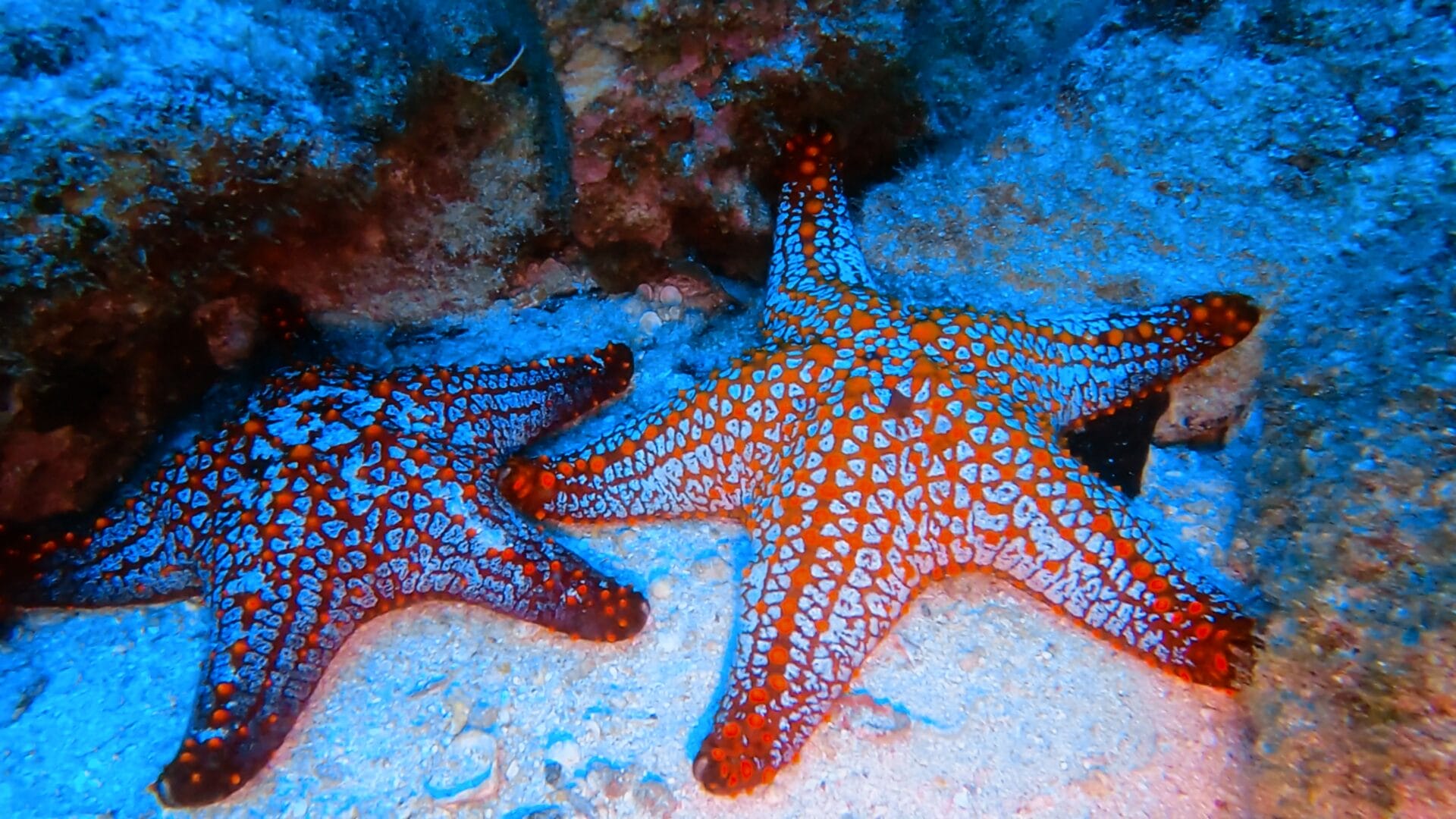
the Great Barrier Reef off the coast of Australia. In China and, according to the team at STAR’s TECH, in South Korea too, an outbreak of the blue bat starfish (Patiria pectinifera) is having a negative impact on the region’s aquatic biodiversity and on the commercial seafood industry. So in waters off South Korea, that country’s government is collecting and disposing of blue bat starfish, as STAR’s TECH Cosmetic Department Manager, Montana Jo tells me.
STAR’s is valorizing what would otherwise be biowaste for threevery different industry applications: they make a de-icer for the municipal infrastructure industry, fertilizer for agricultural use, and collagen for topical skincare applications. The company launched its PENELLAGEN into the cosmetic ingredient marketplace in 2021 and introduced two consumer brands the next year: LABOPE and RERAVE.
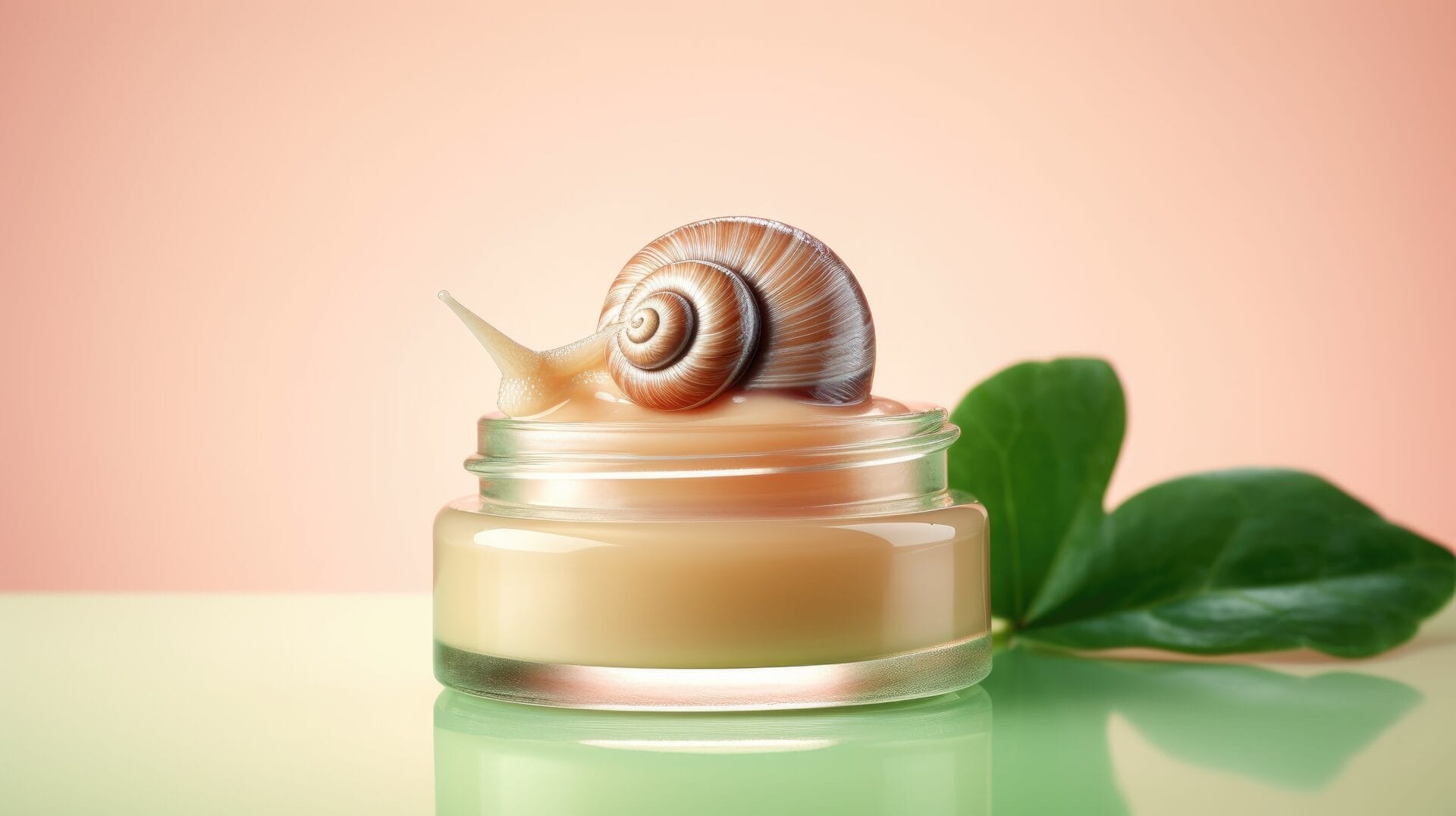
As we move now from the water to the land, I will mention a classic animal-derived cosmetic ingredient: snail mucin, which contains growth factors, antioxidants, hyaluronic acid, glycosamino glycans, glycoproteins, allantoin, glycolic acid, lactic acid, collagen, and elastin, making it very popular in skincare.
Land Animals
This year I was introduced to a brand called Bufarma that formulates skincare with buffalo milk (the same sort that’s used to make buffalo mozzarella). Milk from Bufala Mediterranea Italiana is said to have a “superior fat content to any other milk, making it more nourishing and hydrating, thus perfect for skincare,” according to the ingredient information page of the brand’s ecommerce site.
Interestingly, the brand formulates its line of skincare and body care products with a powder of spray-dried milk. The spray-drying process is relatively fast and concentrates the milk’s nutrients; it extends the shelf life of the ingredient as well. With this ingredient, Bufarma makes a cleanser, a facial exfoliating scrub, a serum, a facial oil, a night cream, and a day cream, as well as a body wash and a body lotion.
The brand is owned by Massimiliano Galdiero, a third-generation buffalo farmer, who is also a professor in the Department of Experimental Medicine at the University of Campania ‘Luigi Vanvitelli’ in Naples, Italy. “Buffalo milk,” according to the brand site, “has a long history of use in cosmetics.” And along with the family business, Galdiero “inherited a vast collection of formulations for making beauty products and methods of distilling organic essences from natural ingredients around the farm.” Besides buffalo milk being a distinctive skincare ingredient, I have to admit that this brand captured my attention, in part, because the buffalo shown in photos on the brand’s ecommerce site are very clean and adorable.

A popular animal-derived skin and hair care ingredient used pre dominantly by brands manufactured and/or sold in Korea, Japan, Taiwan, and China including Hong Kong is horse oil, a purified fat sourced from under the mane on a horse’s neck. Some brands claim to source the ingredient without killing or harming the animal, but horse oil is also a byproduct of the meatpacking industry.
I first learned about the ingredient years ago at an editon of Cosmoprof North America LasVegas, where a Korea-based brand called Tookup, owned by GLG&B, was showing their horse oil facial cream, facial oil, and shampoo. Horse oil is rich in essential fatty acids, similar to human sebum, and has been a common skincare and minor wound treatment in Japan and China for centuries, according to dermatologist and author Dr Marie Jhin, who’s quoted in an item Lyndsay Green wrote about the ingredient for Around the World Beauty.
An ingredient introduced to skincare consumer much more recently is hydrolyzed cow bone extract, which you may recall having read about here last October in my column Global Perspectives: 3 Big Ideas Driving Innovation in Cosmetics and Personal Care (https:shop.eurocosmetics-mag.com/?product=september-october-2023-2). The ingredient is unique to a brand called Sweet Chemistry Skincare and has remarkable regenerative benefits.
And ingredients like lanolin from sheep; and tallow (fat), collagen, and keratin from cows also figure into the conversation about cosmetic ingredients that are decidedly not vegan. Keratin can also be sourced from bird feathers, which brings us to our next category of creatures.
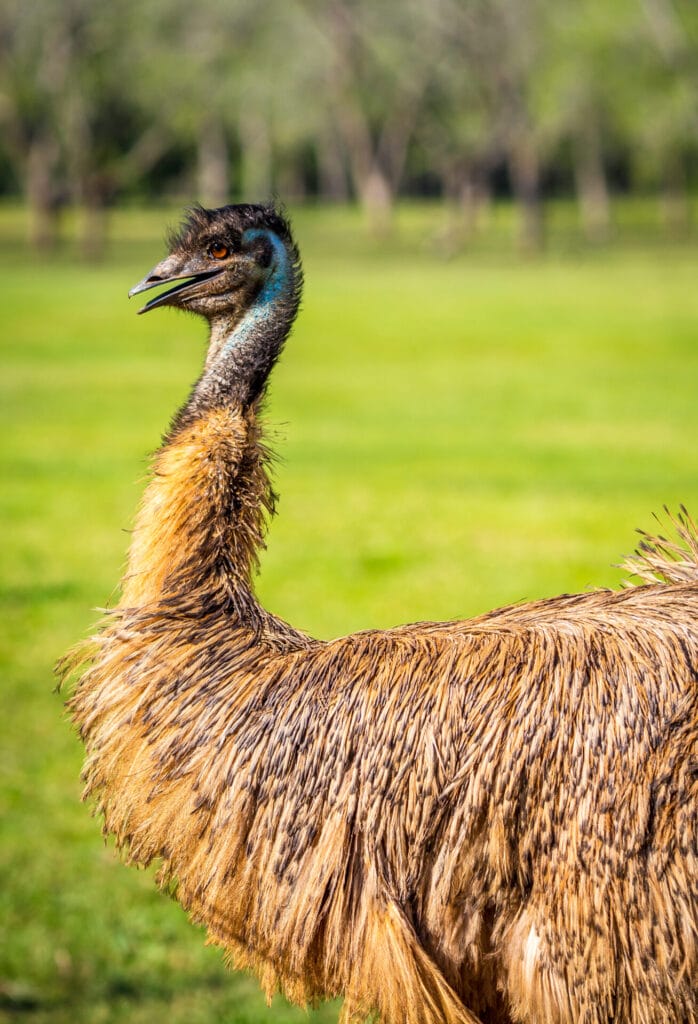
Birds
The two bird beauty ingredients that I’m seeing lately are egg albumin/albumen and emu oil. I know that bird’s nest (saliva from Swiftlets) is also used in skincare; it’s just hasn’t been showing up in my work or research.
The line of Egg Cream sheet masks from the brand Too Cool for School are formulated with both albumen extract and egg yolk extract and have been selling in the US market since late 2016. The K Beauty brand Too Cool for School is based in New York.
Emu oil comes from the native Australian flightless bird. And it’s quite popular as a mass market body moisturizer and for the treatment of minor pain. The Equate brand (acquired by Walmart in 2019), for instance, sells a fragrance-free Emu Oil Cream Blue Topical Rub with Emu Oil, MSM, and Vitamins A & E. Product details on Walmart’s ecommerce site explain in part, “Thought to help relieve minor body aches and pains, heal wounds, and keep skin moisturized while providing protection from the sun, emu oil is considered to be an all-in-one, natural topical remedy.”
Humans
If you read my weekly Beauty Insights newsletter, you know that KOSÉ, I Peace, and Reju formed a strategic partnership this summer to collaborate on the production of custom skincare formulated with somatic stem cell extract. And the stem cells will come from the individual consumer.
The My-Own Beauty Products venture from KOSÉ, I Peace, and Reju is expected to be in the testing phase for both the product and business model before the end of the year. And as I explained in a July issue of the Beauty Insights newsletter, the strategic partnership will work like this: “Japanese medical institutions will collect somatic cells from customers’ own blood. (KOSÉ and Rejuare both headquartered in Japan; I Peace is in California, US.) ‘I
Peace will generate, culture, and manage iPS cells from an individual’s somatic cells using its extensive experience in operating personal iPS cell banking services employing its latest biotechnology and stringent safety protocols to ensure the highest quality,’ according to a media release. Reju will manufacture the cell extract (iPSF). And KOSÉ will formulate and manufacture the skincare, which will be additionally customized to meet consumer preferences for texture, product format, and more.
“Understandably, these products do not fit in the consumer beauty sector. A footnote to the media release announcing the partnership clarifies that ‘Personalized beauty products resulting from this project will be provided through medical institutions under medical supervision, rather than being provided as cosmetics as defined by the Japanese Pharmaceuticals and Medical Devices Act.”
That venture is not unique. MIZ Meditech Cosmetic, a company headquartered in Seoul, South Korea, makes a brand for both the professional and consumer channels called Hutemcell. The brand’s hero ingredient is “human adipose derived stem cell con-
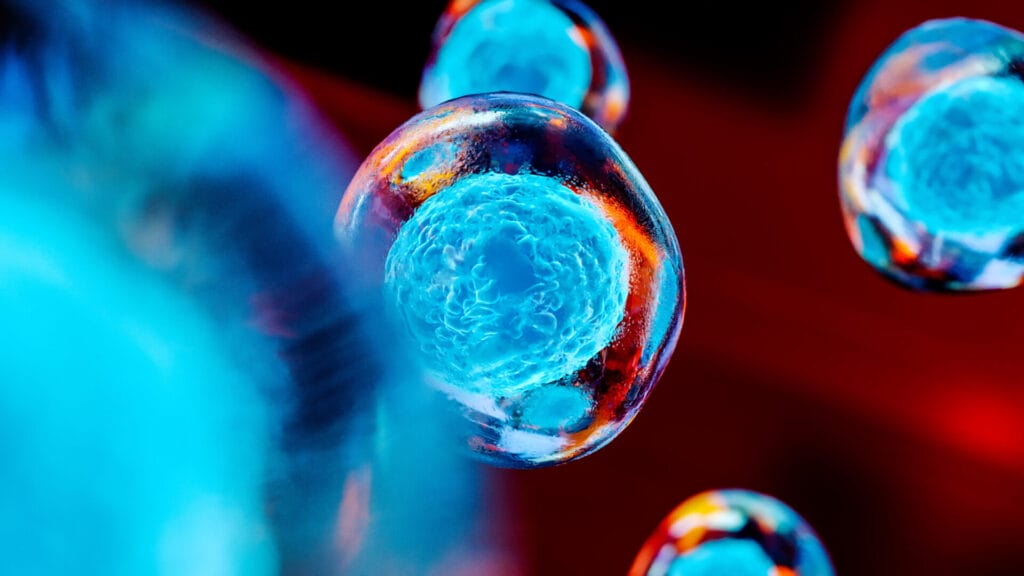
ditioned media [that] is rich in not only growth factors such as EGF, basic FGF, and TGF-b1, but also bioactive compounds such as various cytokines, enzymes, and ECM proteins,” according to materials the brand shared with me. That adipose, should you be curious, might also be described as “young women’s fat,” which is how a brand representative who I spoke with recently described it when I asked about the source of the stem cells. The Hutemcellline comprises ten topical products for skincare and scalp care. At the core of the collection are Hutemcell (an ampule containing 70,000ppm of the media) and Hutemcell + (an ampule containing 450,000ppm of the media).
It’s worth noting that the primary business of MIZ Meditech Cosmetic is B2B sales of treatment machinery and devices for Medi spas and dermatology practices. The company also manufactures and sells product into the professional sector. So while the Hutemcell brand is meant for the consumer sector, this particular consumer is more high-level in their approach to skincare.
Conclusion
A few months ago, Faran Krentcil wrote an item for the Business of Fashion on what she described as “the rise of anti-vegan beauty.” I think it’s unlikely that any of the brands or suppliers mentioned above would call their businesses or products or customers ‘anti-vegan’ but the term is certainly attention-grabbing; and there seems to be no shortage of cosmetic ingredients and products made with inputs from bugs, land animals, aquatic life, and even human-derived materials.
Of course, vegan, biotech production methods are advancing. And many ingredients conventionally derived from animals, insects, and even arachnids now have biotech alternatives. Bolt Threads, for instance, uses a bioengineered yeast to make a cosmetic ingredient called b-silk™ that mimics the properties of spider silk proteins. There is certainly potential for biotech to phase out some (if not eventually all) not-vegan beauty proteins and other cosmetic ingredients, in the same way that biotech solutions will phase out many ingredients made using petrochemicals. But scale up, financial costs, and industry buy-in figure into the equa-
tion too.
And there are efficiencies that come with e.g. black soldier fly ingredient production as well as a level of ecological respect that comes from valorizing animal ‘products’ that would otherwise be discarded as waste, as we saw with Marin Skincare’s use of lobster glycoproteins and STAR’s TECH multi-industry commercialization of starfish slated for disposal.
As things stand today, vegan and non-vegan ingredients alike are bringing benefits to beauty consumers around the world.

Deanna Utroske
As a regular contributor to this publication, Deanna writes the Global Perspectives column, covering cosmetic and personal care product formulation trends, emerging ingredient science, and ingredient marketing trends impacting the future of beauty around the world.



